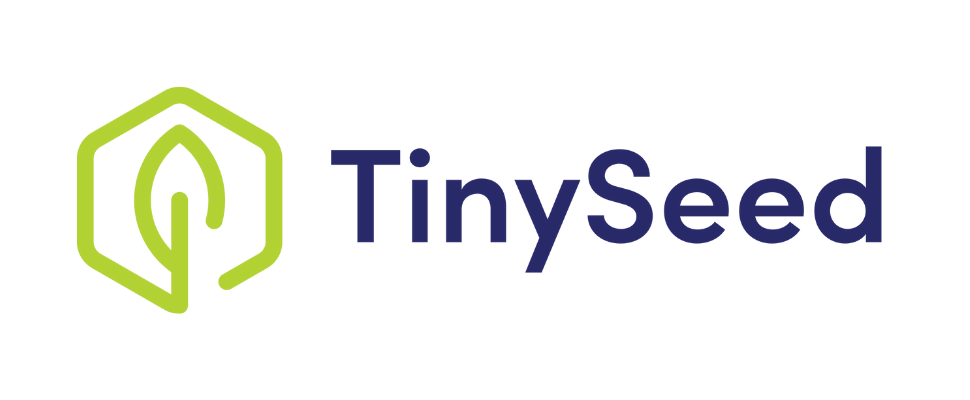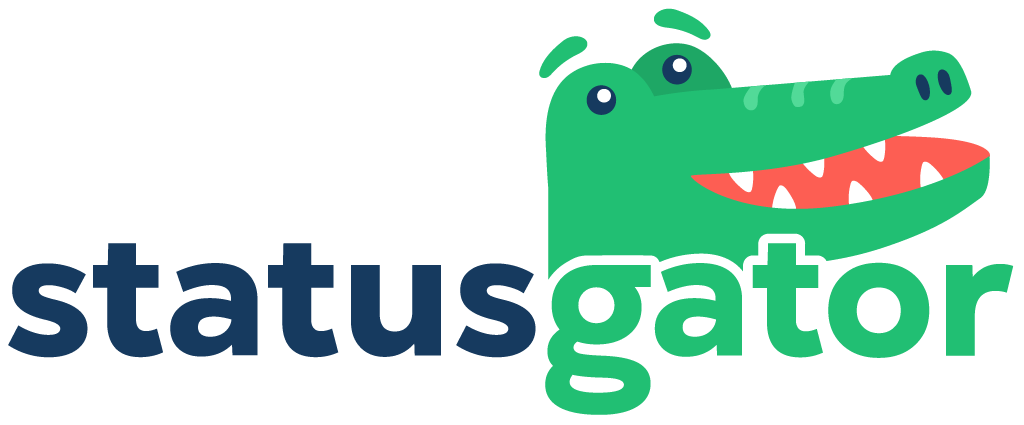Meet Colin Bartlett from StatusGator
Q: Can you introduce yourself and your startup?
A: Yeah, my name is Colin Bartlett. I’m the co-founder of StatusGator. Our platform is a B2B SaaS designed for monitoring software systems and websites. We focus on providing businesses with the tools they need to keep track of the performance and status of their digital assets, ensuring they can quickly respond to and manage any issues that arise.
Q: What inspired the creation of StatusGator?
A: The concept for StatusGator emerged from a real-world problem I encountered while working as a software engineer and consultant. During a project involving multiple third-party APIs, I was tasked with troubleshooting an issue related to the Facebook API. After spending an entire day investigating, I finally checked Facebook’s status page, only to discover they had reported an intermittent outage that explained the problem. This experience highlighted a significant inefficiency: the wasted time and resources on an issue beyond my control, simply because I wasn’t aware of the outage. This led me to question why there wasn’t a system in place to notify users of such updates or a way to monitor changes on these status pages. With dependencies on numerous online services, the need for a centralized platform to check the status of all these services was evident. That’s how StatusGator was conceived—an aggregator (hence the ‘gator’ in the name) of status updates from various services, all in one place. The name, suggested by a friend, encapsulates our goal to provide a comprehensive, easy-to-access status monitoring solution, and it also lends itself to some fun and memorable branding.
Why TinySeed?
Q: How did TinySeed become part of StatusGator’s journey?
A: The journey to TinySeed started nearly a decade into working on StatusGator. Initially launched as a bootstrap project in early 2015, StatusGator was a side project that managed to cover its costs through a modest user base. The turning point came in 2018 when my colleague, Andy, joined as a co-founder. We aimed to grow StatusGator into a serious business, but with a clear intent to avoid traditional venture capital due to our past experiences with startups that failed after pursuing aggressive growth strategies. Our stance on fundraising was firm: we would only consider it if it was non-dilutive and supported a specific, profitable growth channel. This mindset changed around 2021/2022 as StatusGator began to gain momentum, particularly during the pandemic. Seeking ways to sustain our growth, we found inspiration in Rob Walling’s podcast, “Startups for the Rest of Us,” and his accelerator, TinySeed. TinySeed appealed to us because it didn’t push startups onto the conventional VC track but rather supported steady growth companies. On a routine call, Andy and I decided to apply to TinySeed—somewhat impulsively—filling out the application then and there. To our surprise, the application process was straightforward and swift, culminating in an acceptance just a few days later. This decision to join TinySeed marked a significant shift in our approach to scaling StatusGator, aligning with our values of sustainable growth without sacrificing equity or independence.
How a Founder Gets In
Q: Could you detail the application process for TinySeed?
A: The application process for TinySeed was surprisingly straightforward, essentially a one-pager that we completed quite quickly. While I don’t remember the exact questions, the focus was on our revenue and growth trajectory, as well as some basic information about our team. Given our organization around finances, we were able to provide the necessary details without much hassle. This ease of application was a refreshing change from more cumbersome processes, allowing us to apply with minimal disruption to our work.
Funding and Equity Details with TinySeed
Q: Can you share details about the funding TinySeed provides and the equity exchange?
A: While I’m unable to disclose specific figures due to TinySeed’s request, the information about their investment size is readily available on their website. They offer check sizes in the six-figure range, which is modest compared to typical VC investments but was sufficient for our needs, providing us with essential capital to experiment and grow StatusGator. Regarding the equity taken in exchange, although I can’t share precise details, I can say that we were very satisfied with the valuation TinySeed offered. It was a fair assessment of our company’s worth at the time. Considering the potential to sell StatusGator at the valuation TinySeed proposed, we felt confident in the deal. It was a fair exchange that aligned with our views on sustainable growth and the value they brought to the table.
Daily Life Inside TinySeed
Q: What was a typical day like after joining TinySeed?
A: Once we were accepted into TinySeed, the transition wasn’t immediate due to the legal processes involved in closing the deal, which took several months. However, TinySeed was accommodating, allowing us to participate in the accelerator activities even before the legal formalities were fully settled. This approach was incredibly beneficial and showcased their support for our growth from the outset. The accelerator operates remotely, with all participants added to a Slack channel. This platform became a hub for vibrant business discussions, Q&As, and sharing of ideas among the cohort. TinySeed organizes regular mentorship and playbook calls—initially weekly, then possibly monthly—designed to systematically guide startups through growth strategies. These sessions are a blend of TinySeed’s growth formula and insights from external mentors on various relevant topics. The first six months felt like an extension of our regular operations, albeit with the added advantage of financial backing. This period was focused on applying the growth practices discussed in the playbook calls and integrating the advice from mentors into our business strategy. This unique combination of financial support and expert guidance significantly enhanced our ability to implement best practices and accelerate our growth trajectory.
Key Highlights of the TinySeed Program
Q: What aspect of the TinySeed program was most impactful for you?
A: Reflecting on the TinySeed experience, three main components stand out: the financial investment, the mentorship, and the accountability factor. While the capital was undoubtedly beneficial, allowing us to leverage more resources for our growth, it was the accountability and mentorship that truly distinguished the program for me. The mentorship provided direct access to seasoned entrepreneurs like Rob Walling and his team, as well as external experts brought in to share their insights. This network, although confirming many of our strategies, also offered valuable feedback and suggestions that helped refine our approach. However, I perceived our stage of development as relatively advanced within the cohort, which meant that while the mentorship was affirming, it didn’t necessarily introduce novel concepts to our strategy.
The most significant impact came from the accountability aspect. Having an external investor not only invested financially but also genuinely interested in our success brought a new dimension to our operations. This relationship pushed us to maintain a higher standard of reporting and performance, knowing that we had a responsibility not just to ourselves and our customers, but also to an investor who was actively supporting our journey. In essence, while the financial support facilitated operational growth, it was the accountability and the opportunity to engage with a community of like-minded entrepreneurs and mentors that truly marked the TinySeed experience as invaluable. This blend of support, guidance, and responsibility fostered an environment where we could thrive and aim for higher achievements.
Areas for Improvement in the TinySeed Program
Q: What aspects of TinySeed could be improved based on your experience?
A: One area where I felt TinySeed could enhance its offering is in its inclusivity of larger teams within its program. By the time we joined, our team consisted of seven or eight members, encompassing roles from customer support to marketing. The structure of TinySeed, however, seemed primarily tailored towards individual founders or small founding teams, focusing on those who might not have experience managing a staff or who operate primarily with contractors. This focus meant that much of the program’s resources, mentor talks, and events were exclusively available to me, without the ability to share them with the broader team. Given our stage of growth, where we were actively working to solidify a long-term, cohesive team, this restriction was a significant missed opportunity. Our team members could have greatly benefited from direct exposure to the knowledge and philosophies being shared, rather than receiving it second-hand through me. Although this aspect was somewhat disappointing, it might not be relevant for all TinySeed participants, especially those at earlier stages without a larger team. Nonetheless, for businesses at our level of development, allowing broader team access to certain resources and events could significantly amplify the program’s impact, fostering a more comprehensive growth environment for the entire company.
TinySeed’s Impact on StatusGator’s Growth
Q: How has TinySeed influenced StatusGator’s current success?
A: TinySeed’s impact on our growth trajectory has been substantial. Setting a goal for each participating startup to double their Monthly Recurring Revenue (MRR), TinySeed played a crucial role in pushing us towards that milestone. While we’re on track to achieve this goal in 16 months, slightly beyond the 12-month target, it’s clear that our pace of growth has been significantly accelerated by their involvement. Without TinySeed, our progress would have likely been slower. The financial investment was strategically used to develop and implement product features our clients had been requesting, which in turn, positively affected our conversion rates. Moreover, TinySeed’s guidance encouraged us to target the higher end of the market—a common recommendation among accelerators but one that requires a certain level of support and confidence to execute effectively. This shift in focus, supported by the funds and mentorship provided by TinySeed, was instrumental in enhancing our market position and accelerating our growth. While I believe we could have eventually reached our current level of success on our own, TinySeed’s influence allowed us to achieve these results more quickly. The amount of funding, coupled with strategic advice and mentorship, provided us with the necessary resources and direction to scale at a faster rate than we would have managed independently.
Future Milestones and Ongoing Support from TinySeed
Q: What are StatusGator’s next milestones, and how does TinySeed continue to support your growth?
A: Our next significant milestone is reaching one million in Annual Recurring Revenue (ARR). This goal isn’t just a number for us; it symbolizes a major leap in our growth, potentially increasing our valuation and providing a stable financial foundation to support a larger team. Achieving this milestone will also enable us to scale our operations further and maintain momentum in our growth trajectory. TinySeed continues to play a supportive role as we work towards this goal. We’re still actively involved in the TinySeed Slack community, where we now contribute by offering advice to newer members based on our experiences. This exchange of knowledge and support is mutually beneficial, fostering a collaborative environment. Additionally, the one-off advice, encouragement, and accountability we receive from TinySeed and its network remain invaluable resources. These elements not only help us stay focused on our growth targets but also reinforce the enduring value of the TinySeed accelerator program in our journey.
Final Advice for Prospective TinySeed Applicants
Q: Do you have any advice for those considering applying to TinySeed or similar accelerators?
A: Just go for it. The application process with TinySeed is straightforward and not time-consuming, making it a low-risk, potentially high-reward action. However, it’s probably more beneficial for startups that have already achieved some level of traction or revenue. If your product is still in the conceptual stage without any revenue, your efforts might be better spent on validating your product and achieving initial market traction. But for those with even a modest amount of revenue or traction, applying to TinySeed can be a transformative decision. We were pleasantly surprised by how quickly we were accepted and the extensive benefits we’ve gained from the program. The key is to take that step and apply—you might be just as surprised by the outcomes.


